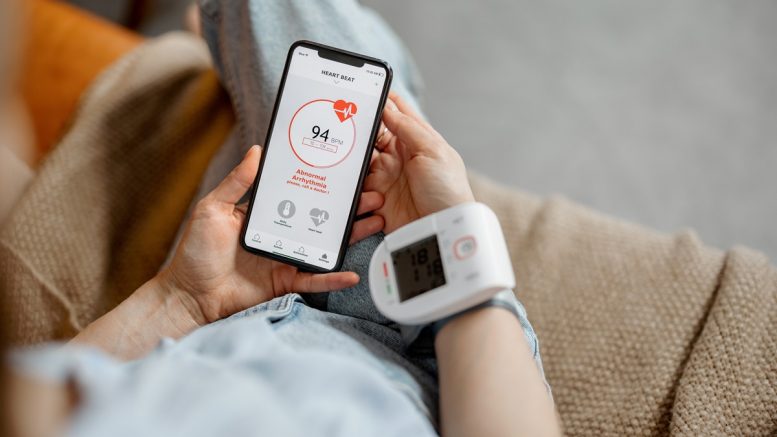At the intersection of cutting-edge technology and patient-centric care, a healthcare revolution is underway. Driven by demand, analysts expect the connected health device market to grow to $520 billion by 2032. However, while enterprises recognize the potential and transformative power of connected health devices, very few life sciences organizations have the digital, technical and collaborative capabilities required to bring the innovation to life.
Connected devices are already reshaping the industry by offering unprecedented opportunities for healthcare professionals to monitor, diagnose, and treat patients remotely. The vast array of possibilities hints at a future where healthcare is seamlessly integrated with technology. Amid this era of healthcare innovation, however, a crucial concern emerges that warrants our attention.
The promise of connected health comes with the necessity of securing medical devices, safeguarding patients, and ensuring the integrity of healthcare technology. Organizations recognize the importance of building trust and resilience between patients and healthcare providers. Hence, to bridge that gap and ensure top notch quality, companies must identify security solutions while emphasizing accessibility and patient-centric care.
The security imperative
Connected medical devices, such as wearable fitness trackers and implantable medical devices, are a transformative healthcare innovation. Envision a future where doctors can remotely adjust pacemaker settings or where individuals with chronic conditions can benefit from real-time vitals monitoring. Not only can this revolutionize patient experiences, but it can extensively enhance healthcare outcomes and make it easier than ever for patients to receive treatment.
Despite the benefits, the security of medical devices takes centre stage and becomes a roadblock as it introduces new gateways for cyberattacks and data breaches. About 50% of older patients currently aren’t using online portals for privacy and security reasons, specifically regarding the storage and use of data collected in patient portals. Cybersecurity incidents with modern connected devices are also becoming increasingly frequent and trust remains top of mind for both patients and organizations. 45% of biopharma companies with more than $20 billion in revenue cite security vulnerabilities as a top challenge they face in development.
Beyond safeguarding sensitive patient information, the crux of the matter lies in preserving patient well-being. The healthcare industry must adopt a paradigm shift where security becomes an integral part of a device’s DNA. Currently, healthcare providers face challenges to retrofit legacy devices with connected technology and introducing purpose-built medical devices. Either way, security for devices must not be an afterthought, and each stage should adhere to the security framework established by regulatory standards.
Harmonizing innovation and regulation
The healthcare sector places exceptional emphasis on regulatory compliance. Connected medical devices are also often part of larger healthcare networks and must exist within a comprehensive regulatory framework. Insecure devices can serve as entry points for cybercriminals to infiltrate the broader network, risking the exposure of sensitive medical information that poses risks to patient safety, privacy breaches, data manipulation, and more. It is the organizations’ responsibility to build trust and resilience among patients and healthcare providers if they are to implement new technologies in their services.
In the US, FDA’s Pre-Market Approval (PMA) process is spearheading the security initiative, requiring medical device manufacturers to adhere to rigorous security criteria before launching their products in the market. This primary stage establishes the foundation for sustained vigilance, with continuous monitoring of devices after release for updates, compliance, and potential recalls. The European Union’s impending Cyber Resilience Act also highlights the industry’s point of view towards high-level risk assessments and security diligence for connected devices.
This also demands greater international collaboration and robust standards for addressing shared data and cybersecurity challenges across sectors. International cooperation among medical device regulators, exemplified by the International Medical Device Regulators Forum (IMDRF) highlights the collective dedication to addressing cybersecurity challenges in interconnected environments.
Elevating expertise and collaboration to address unique security challenges
Addressing the unique security challenges in the medical device industry requires specialized expertise and the cybersecurity sector’s commitment to tackle multifaceted device security concerns. One study found that over 200 million healthcare records were lost, exposed or stolen over the past decade in the US alone. However, the cybersecurity industry faces a shortage of professionals with the essential skill sets, and there is a need to bridge the expertise gap between industries in times like this.
But, by elevating expertise and cross-industry collaboration, we know it can be done. Take telehealth care as one example where the onset of the COVID pandemic accelerated the openness to and use of digital technologies in healthcare. And more importantly, cybersecurity rapidly became an essential pillar to adoption strategies.
In recent months, we’ve closely collaborated with medical device manufacturers, addressing security for products ranging from air purifiers to MRI scanners and colposcopy devices. For example, in collaboration with a global medical device firm, we’ve seen the development of a comprehensive security framework for a connected insulin pump, illustrating how partnership and expertise are crucial for driving innovation in the healthcare industry.
Security, as an integral part of connected health innovations, remains top priority for developers and healthcare organizations. The path forged by connected health devices holds the promise of a brighter and more secure future for healthcare providers, doctors, and patients, but preserving this transformation is a shared duty across sectors to ensure a well-rounded and robust healthcare environment that fosters patient wellbeing.
About the author
Geert van der Linden is Global Head of Cybersecurity Service Line and Aarthi Krishna is Global Head of Intelligent Industry Security at Capgemini Cloud Infrastructure Services





